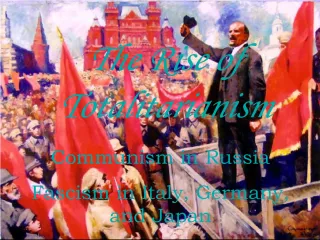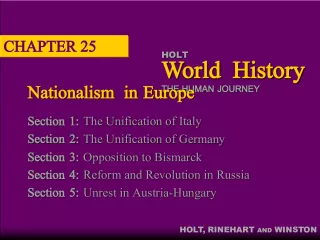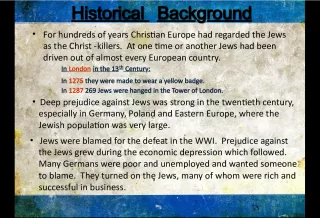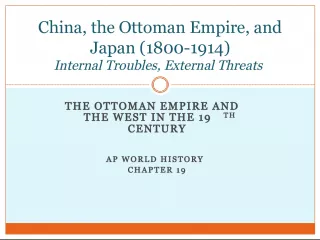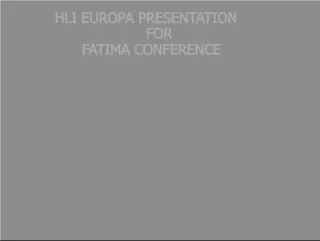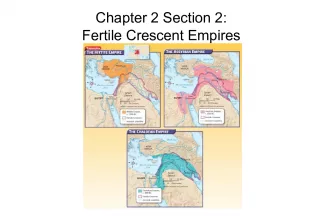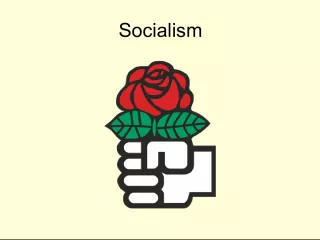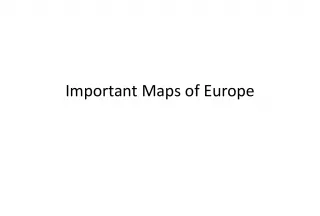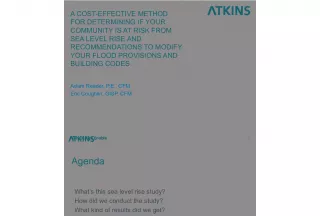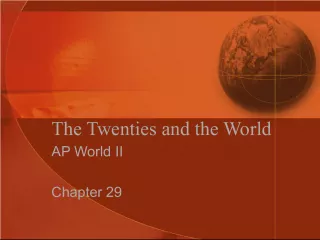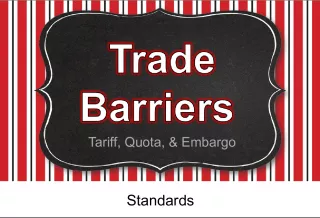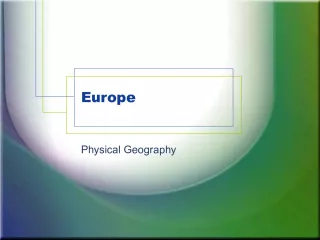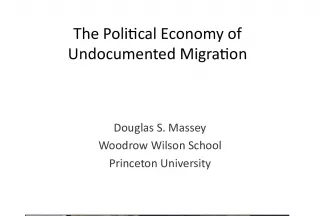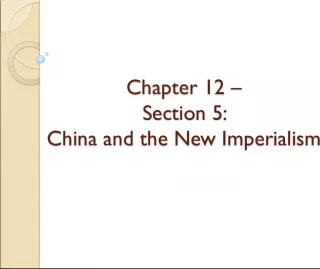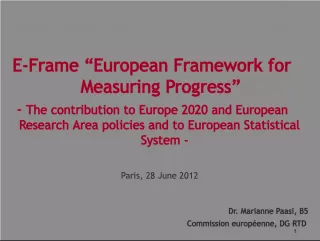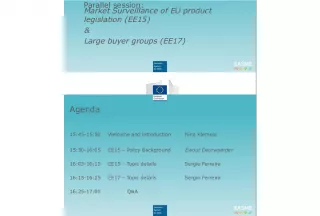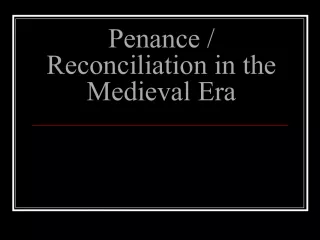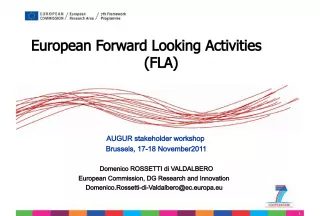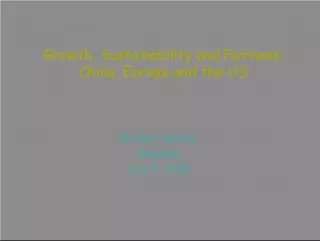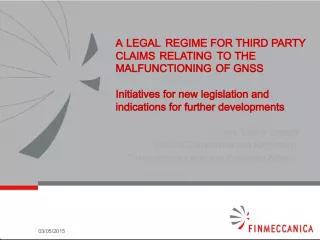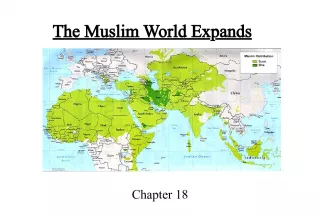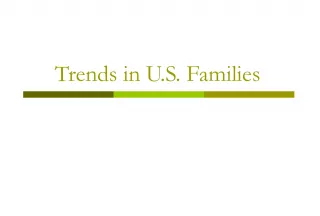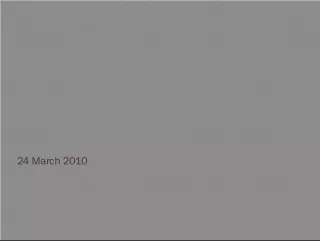The Rise of Totalitarianism in Europe


This chapter explores the emergence and impact of fascist and communist regimes, as well as dictators like Hitler and Mussolini, during the interwar period which eventually led to the outbreak of World War II.
- Uploaded on | 2 Views
-
 isabellamurphy
isabellamurphy
About The Rise of Totalitarianism in Europe
PowerPoint presentation about 'The Rise of Totalitarianism in Europe'. This presentation describes the topic on This chapter explores the emergence and impact of fascist and communist regimes, as well as dictators like Hitler and Mussolini, during the interwar period which eventually led to the outbreak of World War II.. The key topics included in this slideshow are . Download this presentation absolutely free.
Presentation Transcript
1. Chapter 11: Between the Wars Fascism, Communism, Dictators & the Road to WWII Chapter 11: Between the Wars Fascism, Communism, Dictators & the Road to WWII
2. IMAGES Capturing an Era IMAGES Capturing an Era
3. Mussolini Mussolini
4. Il Duce Il Duce
5. Mussolinis Goals Mussolinis Goals
6. Rome Berlin Axis Hitler and Mussolini Rome Berlin Axis Hitler and Mussolini
7. Hitler My Struggle Hitler My Struggle
8. Hitlers Hate Hitlers Hate
9. Der Fhrer (Leader) Der Fhrer (Leader)
10. Hitler Hitler http://www.oldhistoricnewspapers.com/hitler.jpg
11. Emperor Hirohito Emperor Hirohito
12. Alliance with Japan and Italy Alliance with Japan and Italy
13. Japan Japan
14. World History Studies B.8.5-1 They almost ruled the world They almost ruled the world
15. STALIN STALIN
16. World History Studies B.8.5-1 Stalin as Leader of all People Stalin as Leader of all People
17. Stalin killed 40 million of his own people Stalin killed 40 million of his own people Genocide in Ukraine 1932-33
18. 1919-1939 Between the Wars Contents of this Lesson 1919-1939 Between the Wars Contents of this Lesson Rise of Hitler Rise of Hitler Nazi Germany: The Terror State Nazi Germany: The Terror State Nazi Propaganda Nazi Propaganda Stalin Stalin The Secret Police The Secret Police Nazi-Soviet Pact Nazi-Soviet Pact Hitler, Stalin The U.S. Hitler, Stalin The U.S.
19. Hitler's Rise to Power Hitler's Rise to Power http://hsgm.free.fr/liens/hitler.jpg
20. Overview Overview The Nazi Party was formed in 1919 The Nazi Party was formed in 1919 Hitler joined the party shortly after its inception Hitler joined the party shortly after its inception Germany was in a state of disarray after the First World War Germany was in a state of disarray after the First World War There were many extremist groups in Germany at the time There were many extremist groups in Germany at the time
21. World History Studies B.8.5-1 1919-1923 1919-1923 Many Germans were disillusioned after the defeat in the First World war. Ex- soldiers felt that they had been Stabbed in the back and felt that they had not been defeated on the battlefield. Many of them joined Right Wing groups such as the Freikorps or the Nazi party. Many Germans were disillusioned after the defeat in the First World war. Ex- soldiers felt that they had been Stabbed in the back and felt that they had not been defeated on the battlefield. Many of them joined Right Wing groups such as the Freikorps or the Nazi party.
22. 1919-1923 1919-1923 Economic hardship was coupled with humiliation as a result of the terms of the Treaty of Versailles. Right Wing groups gained popularity by saying that they would not adhere to its terms. Economic hardship was coupled with humiliation as a result of the terms of the Treaty of Versailles. Right Wing groups gained popularity by saying that they would not adhere to its terms.
23. Rosa Luxemburg Rosa Luxemburg The Spartacist rising, amongst others, led to many people fearing a Communist revolution in Germany. People looked to right Wing groups to act against this: the Freikorps in particular. The Spartacist rising, amongst others, led to many people fearing a Communist revolution in Germany. People looked to right Wing groups to act against this: the Freikorps in particular. Polish-born German communist. She helped found the Polish Social Democratic Party in the 1890s, the forerunner of the Polish Communist Party. She was a leader of the left wing of the German Social Democratic Party from 1898 where she collaborated with Karl Liebknecht in founding the Spartacus League in 1918 (see Spartacist ). Imprisoned during World War I for opposing the continuation of the war, she was also critical of the decision to launch an uprising in November 1918. She disagreed with leading Polish left- wing ideologists on the issue of Polish nationalism. Luxemburg was also the author of a Marxist critique of capitalist imperialism, The Accumulation of Capital. She was murdered, together with Liebknecht, in January 1919 by the Frei Corps who put down the Spartacist uprising.
24. How did the Nazi party gain support in this period? How did the Nazi party gain support in this period? Military uniforms demonstrated strength at a time when the government was weak Military uniforms demonstrated strength at a time when the government was weak Use of force against communists and Trade unionists was popular with businesses Use of force against communists and Trade unionists was popular with businesses Populist policies and rhetoric were employed to discredit opponents and develop support. Populist policies and rhetoric were employed to discredit opponents and develop support. References to traditional values and reminders of Who was to blame for the economic crisis builds support. References to traditional values and reminders of Who was to blame for the economic crisis builds support.
25. 1923: Violent uprising 1923: Violent uprising By 1923 the Nazi party had gained much support in Bavaria. Now firmly under the control of Adolf Hitler the group attempts to seize control of the government through use of force. By 1923 the Nazi party had gained much support in Bavaria. Now firmly under the control of Adolf Hitler the group attempts to seize control of the government through use of force. Despite having many sympathisers the coup fails and Hitler is imprisoned. Despite having many sympathisers the coup fails and Hitler is imprisoned. The failure of the Beer Hall Putsch demonstrates that power needs to be taken through legal means. The failure of the Beer Hall Putsch demonstrates that power needs to be taken through legal means. http://www.historylearningsite.co.uk/beer_hall_putsch_of_1923.htm
26. Regrouping Regrouping Whilst in prison Hitler analyses the parties strategy Whilst in prison Hitler analyses the parties strategy Political Strategies are developed and refined Political Strategies are developed and refined Shift to winning electoral support Shift to winning electoral support Development of propaganda tools Development of propaganda tools Attempts to win support of big business Attempts to win support of big business
27. 1924-1929 1924-1929 Focus on traditional values Focus on traditional values Builds fear of Left Wing groups Builds fear of Left Wing groups Continued use of military imagery Continued use of military imagery Lack of electoral support due to relative prosperity in Germany at the time Lack of electoral support due to relative prosperity in Germany at the time
28. 1929-1932 A Change in Fortunes 1929-1932 A Change in Fortunes Wall Street Crash leads to end of effective financial assistance from USA Wall Street Crash leads to end of effective financial assistance from USA Unemployment rises rapidly Unemployment rises rapidly Hyperinflation recurs Hyperinflation recurs Threat of Communism increases Threat of Communism increases Coalition government fails to address problems successfully Coalition government fails to address problems successfully
29. DEATH OF PRESIDENT HINDENBURG HITLER BECAME CHANCELLOR THE REICHSTAG FIRE THE ENABLING ACT THE NIGHT OF THE LONG KNIVES OATH OF LOYALTY TO HITLER FUHRER
30. January 1933 The depression after the Wall Street Crash made many more people vote for the Nazis. In 1933 Von Papen convinced Hindenburg that Hitler should become Chancellor.
31. February 1933 The Reichstag building burnt down. A communist was found inside the building. He admitted responsibility. Chancellor Hitler was able to convince people that the Communists were trying to take power by terrorism. He was able to have the Communists banned from the Reichstag. THE REICHSTAG FIRE THE REICHSTAG FIRE
32. March 1933 HITLER CAN RULE ALONE FOR FOUR YEARS. THERE IS NO NEED TO CONSULT THE REICHSTAG. With the Communists banned from the Reichstag Hitler was able to pass: THE ENABLING ACT THE ENABLING ACT
33. The Night of the Long Knives The Night of the Long Knives Hitler had to get rid of Roehm. He was too much of a threat. Hitler had to get rid of Roehm. He was too much of a threat. On the night of 30 th June 1934 Hitlers S.S. killed over 1000 SA members including Roehm. On the night of 30 th June 1934 Hitlers S.S. killed over 1000 SA members including Roehm. The army were pleased. The army were pleased. Hitler had gained the support of the army. Hitler had gained the support of the army. June 1934
34. August 1934 PRESIDENT HINDENBURGS DEATH GAVE HITLER THE OPPORTUNITY TO COMBINE THE ROLE OF CHANCELLOR AND PRESIDENT. HE CALLED HIMSELF DER FUHRER. HINDENBURG DIES HINDENBURG DIES
35. Oath of Loyalty: Every soldier swore a personal oath of loyalty to ADOLF HITLER. August 1934 "I swear by God this sacred oath that I shall render unconditional obedience to Adolf Hitler, the Fhrer of the German Reich, supreme commander of the armed forces, and that I shall at all times be prepared, as a brave soldier, to give my life for this oath." "I swear by God this sacred oath that I shall render unconditional obedience to Adolf Hitler, the Fhrer of the German Reich, supreme commander of the armed forces, and that I shall at all times be prepared, as a brave soldier, to give my life for this oath."
36. Nazi Germany Nazi Germany Keeping Control: Keeping Control: Terror State Terror State This section adapted from Mr RJ Huggins www.SchoolHistory.co.uk
37. Key Quote Key Quote Terror is the best political weapon for nothing drives people harder than a fear of sudden death.
38. How did Hitler keep control of Germany? How did Hitler keep control of Germany? Keeping Control of Germany Everyone was scared of being arrested by the Gestapo and being put in a concentration camp. Hitler Youth & the Young Maidens. Propaganda Mass Rallies, Posters and Propaganda films. The Nazis controlled and censored the radio & newspapers. School children were indoctrinated with Nazi ideas at school. The Terror State Secret police called the Gestapo would spy on and arrest enemies of the state. SS were responsible for running the concentration camps. Popularity Creating Jobs Ripping up the Treaty of Versailles.
39. The Terror State The Terror State Both the Gestapo and the SS were run by Heinrich Himmler. The Gestapo employed an army of spies who would inform on people.
40. Enemies of the State Enemies of the State Communists Communists Social Democrats Social Democrats Jews Jews Trade Unionists. Trade Unionists. Work Shy Work Shy Homosexuals Homosexuals Gypsies Gypsies Germans who bought from Jews Pacifists Radical Christian Organisation Anyone who criticised Hitler or the Nazi Party.
41. Enemies of the State Enemies of the State A list of German women who were still purchasing goods from Jewish shops. Printed to scare or terrorise other people into not buying from the Jews.
42. How did the Terror State Work? How did the Terror State Work? Gestapo Spies inform on you You are woken up by the Gestapo at 1 am in the morning and told that you have 5 minutes to pack your bags. You are arrested and thrown into a cell at the police station Days or maybe weeks later you are interviewed and asked to sign form D11 By signing this form you are giving your consent to be put into a concentration camp. You are handed over to the SS who run the concentration camps. You are imprisoned for up to six months doing hard physical labour. When you are released you tell everybody what has happened to you Fear
43. How did the Terror State Work? How did the Terror State Work? Everyone knew someone who knew someone else who had been in a concentration camp. Everyone knew someone who knew someone else who had been in a concentration camp. 800,000 Germans were imprisoned from 1933 1945 as Enemies of the State. 800,000 Germans were imprisoned from 1933 1945 as Enemies of the State. 500,000 were executed by being shot in the neck. 500,000 were executed by being shot in the neck.
44. Key Quote: Martin Niemollen, 1945 Key Quote: Martin Niemollen, 1945 When the Nazis came for the Communists I was silent, I was not a Communist. When the Nazis came for the Communists I was silent, I was not a Communist. When the Nazis came for the Social Democrats I was silent, I was not a Social Democrat. When the Nazis came for the Social Democrats I was silent, I was not a Social Democrat. When the Nazis came for the Jews I was silent, I was not a Jew. When the Nazis came for the Jews I was silent, I was not a Jew. When the Nazis came for me there was nobody left to protest. When the Nazis came for me there was nobody left to protest.
45. Nazi Propaganda Adapted from Mr Moorhouse www.SchoolHistory.co.uk
46. Nazi Propaganda Nazi Propaganda What is propaganda? What is propaganda? Propaganda is the use of the Media to aggressively promote one point of view. Propaganda is the use of the Media to aggressively promote one point of view. Propaganda is brainwashing of the public, convincing them of an ideological viewpoint. Propaganda is brainwashing of the public, convincing them of an ideological viewpoint.
47. Propaganda Propaganda Discussion Point Discussion Point - Do governments and/or the media use propaganda today? How? - Do governments and/or the media use propaganda today? How?
48. Nazi Propaganda Nazi Propaganda The Nazis quickly recognised the value of the media. From the early days of the party they used aggressive advertising to promote the nazi ideology The Nazis quickly recognised the value of the media. From the early days of the party they used aggressive advertising to promote the nazi ideology Goebbels was in charge of enlightening the German public Goebbels was in charge of enlightening the German public
49. Nazi Propaganda: Methods Nazi Propaganda: Methods Posters Posters Radio Radio Film Film Newspapers Newspapers "Germany's Victory is Europe's Freedom."
50. Posters Posters Posters are cheap and easy to distribute Placed in prominent positions they act as a constant reminder of ideology Can be used for many purposes Youth serves the Fuhrer. All ten- year-olds join the Hitler Youth." www.historywiz.org/ nazi-mm.htm
51. Examples of Nazi Posters "All girls join us" Poster From the Nazi Anti- Semitic Hate Film, The Eternal Jew
52. Radio Radio Hitlers Speeches Hitlers Speeches Hitler is considered to have been one of the greatest public speakers of all time.
53. Film Film was used to show Hitler in a positive light as often as possible. The Nazis commissioned several films, each carefully portraying a certain image try to think what this may have been http://www.third-reich-books.com/third-reich-nazi-films-movies.htm
54. Newspapers Newspapers Censoring newspapers ensures that only the news you want people to read is available to the public Censoring newspapers ensures that only the news you want people to read is available to the public Nazi party members wrote many articles for the press, ensuring that the message was always positive Nazi party members wrote many articles for the press, ensuring that the message was always positive Many publications were banned Many publications were banned Page from Julius Streicher's antisemitic newspaper, "Der Strmer," in which an illustration from a medieval book depicting ritual murder, a medieval antisemitic myth, is reproduced. This page was submitted as evidence at the Nuremberg trials. http://fcit.coedu.usf.edu/holocaust/arts/ARTPROP.HTM
55. STALIN STALIN
56. Stalins Rise to Power Stalins Rise to Power Death of Lenin Death of Lenin Potential Successors Potential Successors The Question of the Economy The Question of the Economy Stalins Maneuvers Stalins Maneuvers
57. Industrializing the Soviet Union Industrializing the Soviet Union The End of the NEP The End of the NEP Dekulakization Dekulakization 5-Year Plans 5-Year Plans Rapid Industrialization Rapid Industrialization
58. The Great Purge The Great Purge Assassination of Sergei Kirov Assassination of Sergei Kirov Threat to the Party Threat to the Party Show Trials Show Trials Purges uncontested Purges uncontested
59. Why Did Stalin Win The Struggle For Power? Why Did Stalin Win The Struggle For Power? The Communist Party in the 1920s, Stalins Rise to Power and the Defeat of His Rivals. The Communist Party in the 1920s, Stalins Rise to Power and the Defeat of His Rivals.
60. The Communist Party in the Early 1920s What Factors Influenced the Power Struggle? The Communist Party in the Early 1920s What Factors Influenced the Power Struggle? When Lenin died he left no clear successor to lead the Communist Party. When Lenin died he left no clear successor to lead the Communist Party. Lenins Testament criticised all the leading candidates e.g. he described Stalin as not being able to use power with sufficient caution and Trotsky for excessive self assurance. Lenins Testament criticised all the leading candidates e.g. he described Stalin as not being able to use power with sufficient caution and Trotsky for excessive self assurance. A group of leaders emerged; a collective leadership. A group of leaders emerged; a collective leadership. By 1929 one of these leaders, Stalin had become a dominant force. By 1929 one of these leaders, Stalin had become a dominant force. His success was the result of a power struggle. His success was the result of a power struggle.
61. Factor 1: The Ban on Factionalism. Factor 1: The Ban on Factionalism. In 1921 a resolution was passed banning all groups within the party from putting forward ideas that disagreed with the official party policy. In 1921 a resolution was passed banning all groups within the party from putting forward ideas that disagreed with the official party policy. Those who showed a tolerance to factionalism could be expelled from the party. Those who showed a tolerance to factionalism could be expelled from the party.
62. Factor 1: The Ban on Factionalism. Factor 1: The Ban on Factionalism. Consequences: Consequences: This ban caused a lack of debate within the party. This ban caused a lack of debate within the party. It also resulted in many expulsions: during the power struggles of the 1920s those who succeeded in getting their ideas accepted were quick to accuse their opponents of factionalism. It also resulted in many expulsions: during the power struggles of the 1920s those who succeeded in getting their ideas accepted were quick to accuse their opponents of factionalism.
63. Factor 2: A Centralised Party Machine. Factor 2: A Centralised Party Machine. Traditionally Communists did not believe in bureaucracy. However, dealing with the complexities of government forced the party into becoming more centralised. Traditionally Communists did not believe in bureaucracy. However, dealing with the complexities of government forced the party into becoming more centralised. The party decided to have a General Secretary to organise matters. The party decided to have a General Secretary to organise matters. Who do you think got this job??? Who do you think got this job???
64. Factor 2: A centralised Party machine. Factor 2: A centralised Party machine. Consequences: Consequences: This position and the growing centralisation of the party put Stalin in a unique position to influence job appointments. This position and the growing centralisation of the party put Stalin in a unique position to influence job appointments.
65. Factor 3: The growth in Party membership. Factor 3: The growth in Party membership. By 1933 there were 3 and a half million members. By 1933 there were 3 and a half million members. Many members were young, inexperienced and uneducated. Many members were young, inexperienced and uneducated.
66. Factor 3: The growth in Party membership. Factor 3: The growth in Party membership. Consequences: Consequences: These were malleable recruits. They were much more likely to obey instructions than some older party members. These were malleable recruits. They were much more likely to obey instructions than some older party members.
67. Factor 4: No one clear Leader. Factor 4: No one clear Leader. Stalin Stalin Trotsky Trotsky Zinoviev Zinoviev Kamenev Kamenev Bukharin Bukharin
68. Leon Trotsky Leon Trotsky Trotsky was the man most feared by the other senior members. Trotsky was the man most feared by the other senior members. BUT.. BUT.. Trotsky refused to compete for leadership. He was absent at Lenins funeral saying that Stalin had told him the wrong date (hummmm). In reality he seems to have lacked the political will to fight. Trotsky refused to compete for leadership. He was absent at Lenins funeral saying that Stalin had told him the wrong date (hummmm). In reality he seems to have lacked the political will to fight. This left the door open for. This left the door open for.
69. Leon Trotsky Leon Trotsky Trotsky was exiled to Turkey. 1 down..3 to go. Trotsky was exiled to Turkey. 1 down..3 to go. Stalin played the other members of the politburo off against each other until they lost their government posts. Stalin played the other members of the politburo off against each other until they lost their government posts. http://www.okay.com/dunc/gulag.htm Trotsky on his Deathbed
70. Stalins Victory. Stalins Victory. Stalins victory was not inevitable, nor was it a result of his political skills alone. Stalins victory was not inevitable, nor was it a result of his political skills alone.
71. Stalins Victory Stalins Victory The centralised nature of the party made it relatively easy to control. This had begun under Lenin. The centralised nature of the party made it relatively easy to control. This had begun under Lenin. The opposition to factionalism established by Lenin led other leading members to their political death as they were seen to not be towing the party line. The opposition to factionalism established by Lenin led other leading members to their political death as they were seen to not be towing the party line. Poorly educated new party members were easy to dominate. Poorly educated new party members were easy to dominate. Stalins own political skills aided his rise. By shifting allegiances, using the secret police and putting his people in key jobs there was no opposition for him to encounter. Stalins own political skills aided his rise. By shifting allegiances, using the secret police and putting his people in key jobs there was no opposition for him to encounter.
72. The Stalinist Purges The Stalinist Purges Followed the First Five Year Plan and the famines and social upheaval of 1931-32 Followed the First Five Year Plan and the famines and social upheaval of 1931-32 Fears of renewed civil war Fears of renewed civil war Opposition to Stalin increased Opposition to Stalin increased Trotsky called for change from abroad Trotsky called for change from abroad Internal opposition groups called for Stalins removal from below Internal opposition groups called for Stalins removal from below Stalins wife publicly criticized him and committed suicide Stalins wife publicly criticized him and committed suicide
73. Solzhenitsyn: "Any adult inhabitant of this country, from a collective farmer up to a member of the Politburo, always knew that it would take only one careless word or gesture and he would fly off irrevocably into the abyss." ( The Gulag Archipelago , vol. 2, p. 633.) Solzhenitsyn: "Any adult inhabitant of this country, from a collective farmer up to a member of the Politburo, always knew that it would take only one careless word or gesture and he would fly off irrevocably into the abyss." ( The Gulag Archipelago , vol. 2, p. 633.) STALINS TERROR STALINS TERROR
74. Factors That Created the Purges Factors That Created the Purges Stalin Stalin Role and function Role and function Leadership and power Leadership and power Party Party Development and structure Development and structure Ideology Ideology Values and language Values and language Oppositions Oppositions Leftist Opposition of 1927 Leftist Opposition of 1927 Rightist Opposition of 1930 Rightist Opposition of 1930
75. Stalins Rise Stalins Rise Why had Stalin risen to the top? Why had Stalin risen to the top? Distinct and invaluable Distinct and invaluable Practitioner, not a theorist Practitioner, not a theorist Common man, not an elitist Common man, not an elitist Plain spoken, not an intellectual Plain spoken, not an intellectual
76. Counterweight Counterweight Lenin leaned on him to do the work others would not Lenin leaned on him to do the work others would not Stalin balanced the competing egos and interests in the Politburo Stalin balanced the competing egos and interests in the Politburo Perceived as man of moderation, compromise, and level-headedness Perceived as man of moderation, compromise, and level-headedness Dedicated, ruthless, brutal if necessary Dedicated, ruthless, brutal if necessary
77. Stalins Position Stalins Position Organizer and workhorse Organizer and workhorse Commissar for Nationalities Commissar for Nationalities Member of Politburo, Orgburo, Secretariat (all subsets of the Central Committee) and the party Control Commission Member of Politburo, Orgburo, Secretariat (all subsets of the Central Committee) and the party Control Commission Controlled party membership and local elections Controlled party membership and local elections Minimized criticisms of Central Committee by closely structuring attendance at party congresses Minimized criticisms of Central Committee by closely structuring attendance at party congresses
78. Lenins Last Years Lenins Last Years Given more unwanted jobs Given more unwanted jobs Enforced political isolation on Lenin after his stroke on doctors (and the Politburos) orders Enforced political isolation on Lenin after his stroke on doctors (and the Politburos) orders Positions opened opportunities, but also carried dangers Positions opened opportunities, but also carried dangers The others in the leadership thought he would trip up and they could dispose of him The others in the leadership thought he would trip up and they could dispose of him Stalins self-image Stalins self-image Indispensable Indispensable Beset by opponents Beset by opponents
79. Stalin in the 1930s Stalin in the 1930s The leader, but not absolute The leader, but not absolute Had to exist in a system of conflicting groups and interests Had to exist in a system of conflicting groups and interests Dependent upon, but also powerful over, the personnel of the party Dependent upon, but also powerful over, the personnel of the party The nomenklatura (party political elites) The nomenklatura (party political elites) Moscow had accumulated much centralized power Moscow had accumulated much centralized power Stalin had not really created the system but he was its chief representative and patron Stalin had not really created the system but he was its chief representative and patron
80. Party and Society Party and Society Partys control insecure in countryside Partys control insecure in countryside Had been lesser of two evils in 1921 Had been lesser of two evils in 1921 Intense rural opposition to collectivization Intense rural opposition to collectivization Partys responses had been massive recruitment drives Partys responses had been massive recruitment drives Lenin Levy of 1924 brought in 200,000 members, mainly ill-educated, Russian-ethnic, industrial workers Lenin Levy of 1924 brought in 200,000 members, mainly ill-educated, Russian-ethnic, industrial workers Membership reached about 2 million, mostly recruited between 1929-1932 Membership reached about 2 million, mostly recruited between 1929-1932
81. Fissures in the Party Fissures in the Party The results of growth and centralization led to major divisions The results of growth and centralization led to major divisions Four distinct levels Four distinct levels Stalin and Politburo Stalin and Politburo Central Moscow leadership Central Moscow leadership Regional and local leaders Regional and local leaders Rank and file party members Rank and file party members The following is drawn mainly from J. Arch Getty and Oleg V. Naumov, The Road to Terror: Stalin and the Self-Destruction of the Bolsheviks, 1932-1939 , Yale University Press, 1999. The following is drawn mainly from J. Arch Getty and Oleg V. Naumov, The Road to Terror: Stalin and the Self-Destruction of the Bolsheviks, 1932-1939 , Yale University Press, 1999.
82. Antecedents Antecedents Civil War values Civil War values Implacable and pitiless character rewarded Implacable and pitiless character rewarded Civil rights and legality as bourgeois liberal nostrums Civil rights and legality as bourgeois liberal nostrums The peasants as the enemy of the revolution The peasants as the enemy of the revolution Mass terror as legitimate, if not respectable Mass terror as legitimate, if not respectable Secret police ( Cheka , later OGPU) first employed Secret police ( Cheka , later OGPU) first employed
83. Language and Politics Language and Politics The use of flexible and loosely-defined metaphors in official discourse to identify enemies The use of flexible and loosely-defined metaphors in official discourse to identify enemies Kulak Kulak Trotskyist Trotskyist Saboteur Saboteur Counter-revolutionary Counter-revolutionary Traitor Traitor
84. The Party and Purges The Party and Purges Purges of enemies were accepted, if not promoted, by many in the party Purges of enemies were accepted, if not promoted, by many in the party Fearful for their positions if the regime collapsed Fearful for their positions if the regime collapsed True believers in communism and the chosen role of the Bolshevik party True believers in communism and the chosen role of the Bolshevik party
85. Ideology and Truth Ideology and Truth The historical destiny and inevitability of Communism The historical destiny and inevitability of Communism Deaths, setbacks and complications could not be the result of erroneous policies Deaths, setbacks and complications could not be the result of erroneous policies Had to be the consequence of sabotage, class enemies and internal party traitors Had to be the consequence of sabotage, class enemies and internal party traitors
86. Two Oppositions Two Oppositions The United Opposition of 1927 The United Opposition of 1927 Trotsky, Zinoviev and Kamenevs threat to take matters to the street after losing out to Stalin- Bukharin Trotsky, Zinoviev and Kamenevs threat to take matters to the street after losing out to Stalin- Bukharin Broke cardinal rule of keeping disputes within the party, behind closed doors Broke cardinal rule of keeping disputes within the party, behind closed doors Refused to publicly recant, admit errors, and accept judgment Refused to publicly recant, admit errors, and accept judgment Kamenev was severely demoted; Zinoviev and Trotsky were expelled; Trotsky deported in 1929 Kamenev was severely demoted; Zinoviev and Trotsky were expelled; Trotsky deported in 1929
87. Two Oppositions Two Oppositions Rightist Opposition of 1930 Rightist Opposition of 1930 Bukharin, Rykov, and Tomsky recanted their errors in private speeches to the party Bukharin, Rykov, and Tomsky recanted their errors in private speeches to the party Performed what was to become a basic apology ritual Performed what was to become a basic apology ritual Lost their Politburo seats, but stayed in the party and Central Committee Lost their Politburo seats, but stayed in the party and Central Committee
88. The Secret Police The Secret Police History History Functions Functions Structure Structure
89. History History Tsarist Secret Police: Okhrana Tsarist Secret Police: Okhrana Under Lenin: Cheka (1917- 1922) Under Lenin: Cheka (1917- 1922) Head: Felix Dzerzhinsky Head: Felix Dzerzhinsky Purpose: Prevent counterrevolutionary activities Purpose: Prevent counterrevolutionary activities First camp for political prisoners: Solovki Monastery First camp for political prisoners: Solovki Monastery 1922: made part of NKVD (Commissariat of Internal Affairs) 1922: made part of NKVD (Commissariat of Internal Affairs)
90. The Great Terror The Great Terror 1934--assasination of Kirov 1934--assasination of Kirov Purge of the Leningrad Party Purge of the Leningrad Party Yezhov 1936-38 Yezhov 1936-38 Enemies of the People Enemies of the People Public trials of important figures Public trials of important figures Beria 1938-1953 Beria 1938-1953
91. KGB KGB Committee for State Security Committee for State Security 1954 to end of Soviet period 1954 to end of Soviet period Functions Functions Foreign intelligence Foreign intelligence Activities of foreigners on Soviet territory Activities of foreigners on Soviet territory Ideological control of Soviet population Ideological control of Soviet population Secret informers Secret informers dissidents dissidents
92. GULAG GULAG State Directorate of (Labor) Camps State Directorate of (Labor) Camps Corrective Labor: White Sea Canal project 1930- 31 Corrective Labor: White Sea Canal project 1930- 31 Work reforges anti-social people Work reforges anti-social people Cheap labor Cheap labor Solzhenitsyn: Gulag Archipelago Solzhenitsyn: Gulag Archipelago Death camps Death camps Kolyma Kolyma Political prisoners: Article 58 Political prisoners: Article 58
93. Death Toll Death Toll Solzhenitsyn: 66 million Solzhenitsyn: 66 million 1927-29: 1 mil., political opposition 1927-29: 1 mil., political opposition 1930-33: Collectivization 1930-33: Collectivization 12 mil. Peasants deported to Siberia 12 mil. Peasants deported to Siberia 1932-33: Famine 1932-33: Famine 6-7 mil. Die of starvation 6-7 mil. Die of starvation 1.5-2 mil. Arrested for crimes against state property 1.5-2 mil. Arrested for crimes against state property http://www.personal.psu.edu/users/w/x/wxk116/sjk/kolyma3.htm
94. Death Toll (cont.) Death Toll (cont.) Great Terror 1937-38: 5- 7 mil. Arrested, shot, sent to labor camps Great Terror 1937-38: 5- 7 mil. Arrested, shot, sent to labor camps 50% of Party, 70% of Central Committee, 66% of military, including nearly all generals 50% of Party, 70% of Central Committee, 66% of military, including nearly all generals 1939-41: Mass repressions in the Baltic states and western Ukraine, Belorussia 1939-41: Mass repressions in the Baltic states and western Ukraine, Belorussia http://www.mega.nu:8080/ampp/rummel/dbg.tab1.4.gif
95. Death Toll (cont.) Death Toll (cont.) During World War II During World War II 2 mil. Ethnic Germans deported 2 mil. Ethnic Germans deported 3 mil. Moslems 3 mil. Moslems 2-3 mil. Arrested for reporting late for work 2-3 mil. Arrested for reporting late for work War casualties: 20 mil. War casualties: 20 mil. Post-war: 10-12 mil. Deprived of rights or sent to labor camps for living in areas occupied by Nazis during war Post-war: 10-12 mil. Deprived of rights or sent to labor camps for living in areas occupied by Nazis during war
96. Reasons Reasons Eliminate rivals and potential rivals Eliminate rivals and potential rivals Intensify the mood of terror Intensify the mood of terror Blame government failures on enemies Blame government failures on enemies Cheap labor for government projects Cheap labor for government projects
97. Adapted from Sean Connolly Adapted from Sean Connolly And And Nick Wildey Nick Wildey The Nazi-Soviet Pact The Nazi-Soviet Pact
98. I must confess to the most profound distrust of Russia. And I distrust her motives, which seem to me to have little connection with our ideas of liberty, and to be concerned only with getting everyone else by the ears. I must confess to the most profound distrust of Russia. And I distrust her motives, which seem to me to have little connection with our ideas of liberty, and to be concerned only with getting everyone else by the ears.
99. Moreover, she is both hated and suspected by many of the smaller States, notably by Poland , Romania and Finland . Moreover, she is both hated and suspected by many of the smaller States, notably by Poland , Romania and Finland . Neville Chamberlain Neville Chamberlain
100. Summary of Articles Summary of Articles Communication between both governments was key so as to address problems reflecting on their countrys common interests. Communication between both governments was key so as to address problems reflecting on their countrys common interests. Non-aggression was the main component, assuring that neither side would attack the other and any violence was strictly forbidden. Non-aggression was the main component, assuring that neither side would attack the other and any violence was strictly forbidden.
101. Summary of Articles Contd Summary of Articles Contd The treaty would last for ten years, after that it would continue for five more years if neither party expressed disinterest in the relationship. The treaty would last for ten years, after that it would continue for five more years if neither party expressed disinterest in the relationship. Any conflicts between parties would not be settled through violence, but rather through exchanging opinions or arbitration commissions. Any conflicts between parties would not be settled through violence, but rather through exchanging opinions or arbitration commissions.
102. Not an Alliance Not an Alliance The treaty or pact was definitely not an alliance. The two powers did not agree to international efforts. The treaty or pact was definitely not an alliance. The two powers did not agree to international efforts. The economic agreement of August 13, 1939 named USSR to provide Germany with food and raw materials. The economic agreement of August 13, 1939 named USSR to provide Germany with food and raw materials. Germany would supply the U.S.S.R. with finished products. Germany would supply the U.S.S.R. with finished products.
103. A Shock to the World A Shock to the World The Nazi's were known for hating Communists . With the USSR a Communist body, the world was shocked that these two governments would sign any sort of agreement, much less a non-aggression one. The Nazi's were known for hating Communists . With the USSR a Communist body, the world was shocked that these two governments would sign any sort of agreement, much less a non-aggression one.
104. Two Terms that Dont Mix Two Terms that Dont Mix Ideological Differences Ideological Differences Fascism embraces private property Fascism embraces private property Communism nationalizes (takes away) private property Communism nationalizes (takes away) private property
105. Hitler and Stalin Hitler and Stalin Hitler and Stalin were seeking power by abusing the citizens of their countries, aspiring to world domination. Hitler and Stalin were seeking power by abusing the citizens of their countries, aspiring to world domination. In both Hitlers Germany and Stalins U.S.S.R., the populations were split down the mid dle . In both Hitlers Germany and Stalins U.S.S.R., the populations were split down the mid dle .
106. Hitler / Stalin Population Effects Hitler / Stalin Population Effects In the U.S.S.R. Stalinism made the people paranoid about not helping the Soviet cause. The Great Purge led to the deaths of millions of Soviets. In the U.S.S.R. Stalinism made the people paranoid about not helping the Soviet cause. The Great Purge led to the deaths of millions of Soviets. In Germany, Hitler created massive rifts between races leading to the deaths of millions of Jews. In Germany, Hitler created massive rifts between races leading to the deaths of millions of Jews.
107. Secret Perks of the Agreement Secret Perks of the Agreement The secret protocol of the agreement gave the Soviets control of the Baltic States, blocked the Soviets from entering a war against Germany, and split Poland between the two countries. The secret protocol of the agreement gave the Soviets control of the Baltic States, blocked the Soviets from entering a war against Germany, and split Poland between the two countries.
108. Poland Result of Pact on Target Nations Poland Result of Pact on Target Nations About a week after the signing of the pact, German forces entered Poland. About a week after the signing of the pact, German forces entered Poland. Throughout September of 1939, Poland was subject to occupation in the west from German forces and from the east by Soviet forces. Throughout September of 1939, Poland was subject to occupation in the west from German forces and from the east by Soviet forces. The British and French honored their ally system by declaring war on Germany. The British and French honored their ally system by declaring war on Germany.
110. Bloodthirsty Bloodthirsty The Polish were forced into labour camps and their military officers were brutally murdered. The Polish were forced into labour camps and their military officers were brutally murdered. The goal of German/Soviet occupation was to enslave the Polish and erase their sense of nationalism and identity. The goal of German/Soviet occupation was to enslave the Polish and erase their sense of nationalism and identity.
111. A great myth developed that only the fascist enemy was capable of genocide, of mass crime. If the crimes of the Soviet Union were to be put into the same category as those of the Nazis, the whole moral story of why we fought the Second World War would have been ruined. We now know that during the war, Stalin actually killed more of his own people than Hitler killed during the Holocaust. A great myth developed that only the fascist enemy was capable of genocide, of mass crime. If the crimes of the Soviet Union were to be put into the same category as those of the Nazis, the whole moral story of why we fought the Second World War would have been ruined. We now know that during the war, Stalin actually killed more of his own people than Hitler killed during the Holocaust. Norman Davies Norman Davies
112. At the Katyn forests in 1043, nearly 4,000 Polish military officers were discovered in a mass grave; a massacre which was recently claimed in responsibility in 1991 by the Soviets. At the Katyn forests in 1043, nearly 4,000 Polish military officers were discovered in a mass grave; a massacre which was recently claimed in responsibility in 1991 by the Soviets.
113. The Big Picture of Poland The Big Picture of Poland The concentration camps killed Jews on Polish soil at infamous camps such as Auschwitz, Majdanek, and Treblinka. The concentration camps killed Jews on Polish soil at infamous camps such as Auschwitz, Majdanek, and Treblinka. Almost all of the 3 million Jews living in Poland were annihilated by the ruthless Germans and Soviets. Almost all of the 3 million Jews living in Poland were annihilated by the ruthless Germans and Soviets.
114. An Attack on Finland, Gone Bad An Attack on Finland, Gone Bad On November 30th, 1939 the USSR attacked Finland, expecting an easy victory. However Finland was able to hold them off and retain its independence. This scuttle was known as the Winter War. On November 30th, 1939 the USSR attacked Finland, expecting an easy victory. However Finland was able to hold them off and retain its independence. This scuttle was known as the Winter War.
115. The End of the Pact The End of the Pact The pact between the two countries was severed as a result of Hitler invading the U.S.S.R. on June 22 nd , 1941. The pact between the two countries was severed as a result of Hitler invading the U.S.S.R. on June 22 nd , 1941.
116. Failure of the pact Failure of the pact The Germans were avoiding fighting a two front war. The Germans were avoiding fighting a two front war. The attack on the Soviets may have helped to win the war for the allies, as the Germans then had two fronts to supply, occupy, and fight . The attack on the Soviets may have helped to win the war for the allies, as the Germans then had two fronts to supply, occupy, and fight .
117. They should have known They should have known The attack on the USSR shocked few people. It was assumed that this pact would last only long enough to give Germany the advantage of not having to fight on two fronts. The attack on the USSR shocked few people. It was assumed that this pact would last only long enough to give Germany the advantage of not having to fight on two fronts.
118. USSR Enters WWII USSR Enters WWII Following the German invasion of the USSR, the Soviets were involved in WWII, as well as defeating the German powers. Following the German invasion of the USSR, the Soviets were involved in WWII, as well as defeating the German powers.
119. U . S. Involvement U . S. Involvement The U.S. soon became involved in the war. If the U.S. was involved in the war prior to June 22 nd , 1941, many people believe that Germany would not have attacked Russia. The U.S. soon became involved in the war. If the U.S. was involved in the war prior to June 22 nd , 1941, many people believe that Germany would not have attacked Russia. http://www.hfcsd.org/ww2
120. U . S. and U.S.S.R. U . S. and U.S.S.R. The combination of the United States and the USSR joining allied efforts in a matter of months apart, morale among British and French troops skyrocketed, and the Soviets fought as if there had been no negotiations between their government and Germany at all. The combination of the United States and the USSR joining allied efforts in a matter of months apart, morale among British and French troops skyrocketed, and the Soviets fought as if there had been no negotiations between their government and Germany at all.
121. Ours is a righteous cause. The enemy shall be defeated. Victory will be ours. Ours is a righteous cause. The enemy shall be defeated. Victory will be ours. Vyacheslav Molotov - June 22, 1941 Vyacheslav Molotov - June 22, 1941 (Foreign minister of the USSR during time of signing of pact as well as time of attack.) (Foreign minister of the USSR during time of signing of pact as well as time of attack.)
122. Evaluation Evaluation What were the provisions of the Nazi- Soviet Pact? What were the provisions of the Nazi- Soviet Pact? Was it a treaty of alliance? If not, what was its purpose? Was it a treaty of alliance? If not, what was its purpose? Why was the world shocked when it was announced? What were the ideological differences between Hitler and Stalin? Why was the world shocked when it was announced? What were the ideological differences between Hitler and Stalin? What effect would the pact have on the nations who were targeted? What effect would the pact have on the nations who were targeted? When and how would the Pact be broken? When and how would the Pact be broken?
123. Works Cited Works Cited German-Soviet Non-Aggression Treaty, 1939 German-Soviet Non-Aggression Treaty, 1939 http://www.ess.uwe.ac.uk/documents/German_Soviet_Pact.htm http://www.ess.uwe.ac.uk/documents/German_Soviet_Pact.htm Accessed 5-30-03 Accessed 5-30-03 Site contained articles of provisions of the pact. Site contained articles of provisions of the pact. Picture Picture http://www.jacdepczyk.com/images/depczyk_play.jp g http://www.jacdepczyk.com/images/depczyk_play.jp g Accessed 5-30-03 Accessed 5-30-03 Grolier Multimedia Encyclopedia Grolier Multimedia Encyclopedia http://go.grolier.com http://go.grolier.com Accessed 5-30-03 Accessed 5-30-03 Good general background information, combined with great graphics of Hitler and Stalin. Good general background information, combined with great graphics of Hitler and Stalin. Polands Holocaust Polands Holocaust www.polandsholocaust.org/ www.polandsholocaust.org/ Accessed 6/06/03 Accessed 6/06/03 Excellent source for information regarding a country whose holocaust was not quite as known about as was Germanys. Excellent source for information regarding a country whose holocaust was not quite as known about as was Germanys. Nazi-Soviet Pact Nazi-Soviet Pact http://www.spartacus.schoolnet.co.uk/RUSnazipact.htm http://www.spartacus.schoolnet.co.uk/RUSnazipact.htm Accessed 5-30-03 Accessed 5-30-03 Site contained information on both Hitler and Stalin, as well as several primary source documents. Site contained information on both Hitler and Stalin, as well as several primary source documents.
124. Works Cited Contd Works Cited Contd The Avalon Project The Avalon Project http://www.yale.edu/lawweb/avalon/nazsov/nonagres.htm http://www.yale.edu/lawweb/avalon/nazsov/nonagres.htm Accessed 5-30-03 Accessed 5-30-03 Contained articles of the pact. Contained articles of the pact. Excellent web site for information on a wide array of topics. Excellent web site for information on a wide array of topics. Germany and the Soviet Union sign a non-aggression pact Germany and the Soviet Union sign a non-aggression pact http://campus.northpark.edu/history/WebChron/World/HitlerStalin.html http://campus.northpark.edu/history/WebChron/World/HitlerStalin.html Accessed 5-30-03 Accessed 5-30-03 Site talked slightly about the signing of the pact, but focused mainly on the invasion of Poland. Site talked slightly about the signing of the pact, but focused mainly on the invasion of Poland. German and Soviet Rule German and Soviet Rule http://www.1upinfo.com http://www.1upinfo.com Accessed 6/6/03 Accessed 6/6/03 Detailed outline of the pact, definitely a source to use again for many other topics. Detailed outline of the pact, definitely a source to use again for many other topics. Nazi-Soviet Pact Nazi-Soviet Pact http://www.johndclare.net/RoadtoWWII8.htm http://www.johndclare.net/RoadtoWWII8.htm Accessed 5-30-03 Accessed 5-30-03 Site contained information on the shock that this pact caused to the rest of the world. Also contained some pictures. Site contained information on the shock that this pact caused to the rest of the world. Also contained some pictures.
